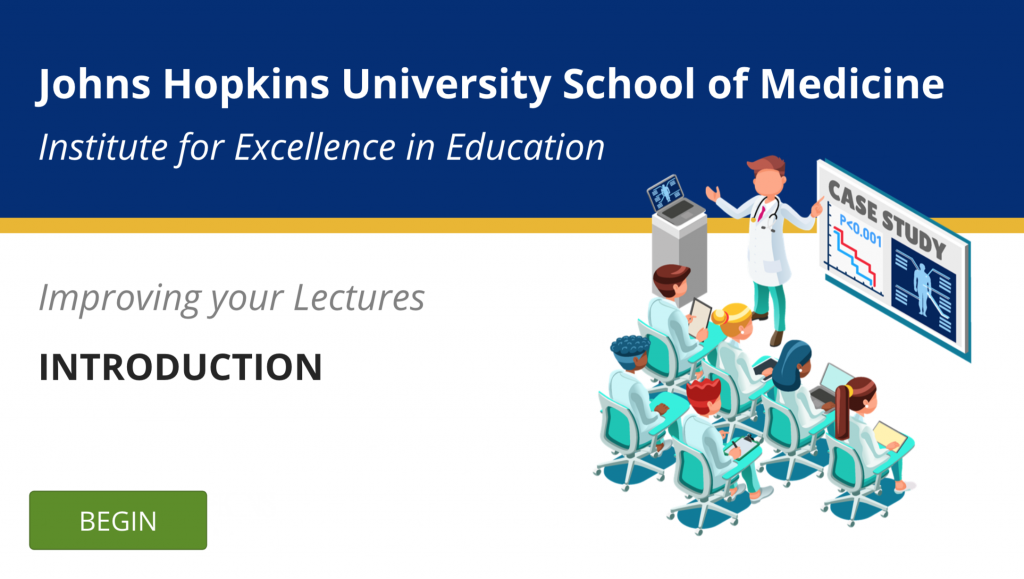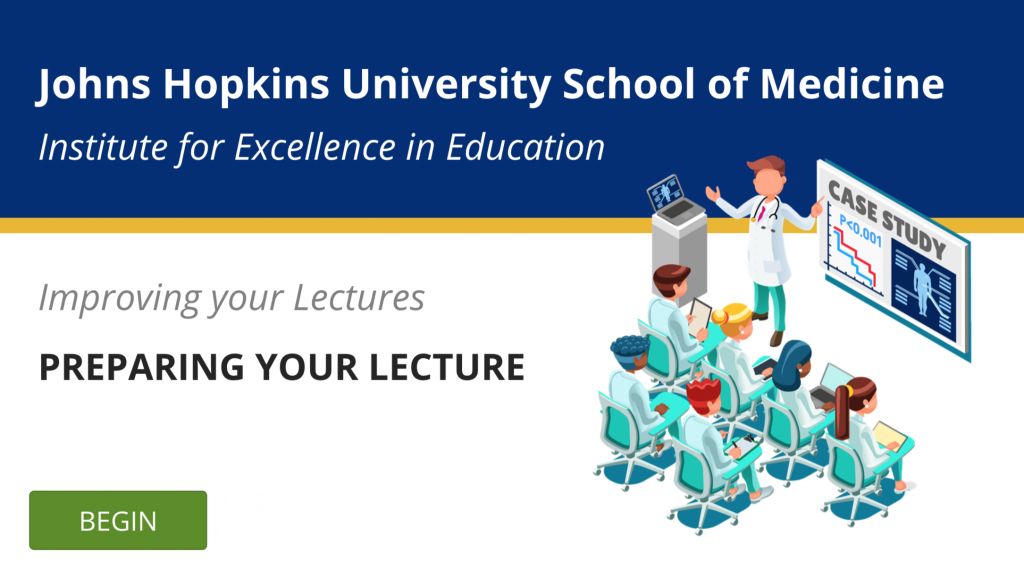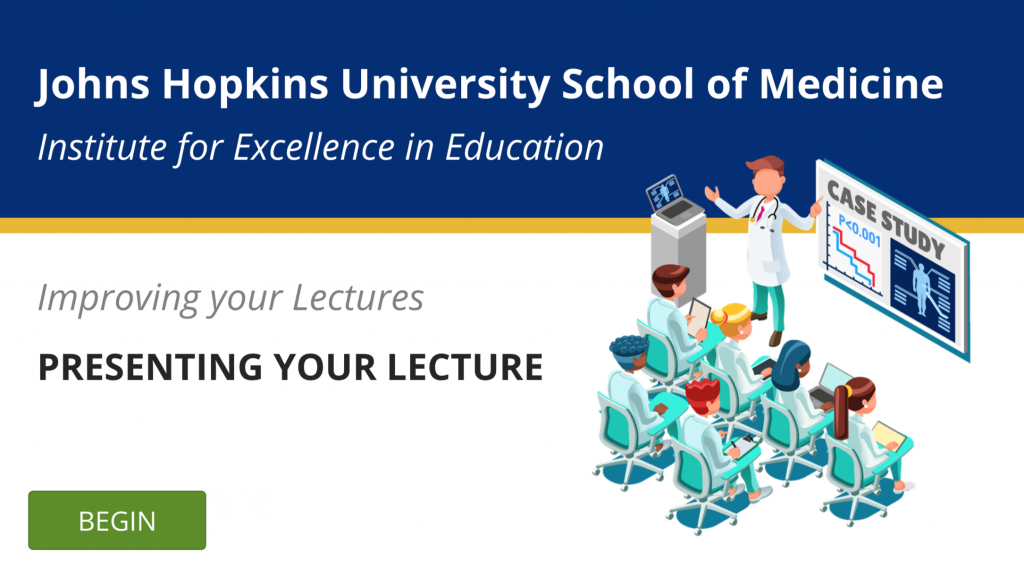Comments? Contact IEE.
1. Objectives
After completion of this module, viewers will be able to:
- List the four parts of lecture preparation.
- Describe factors to consider when choosing to lecture and what format may be best.
- Demonstrate techniques to engage your learners and maximize their retention.
- Design slides that incorporate best practices to maximize their effectiveness.
- Evaluate their presentation(s) using a standardized rubric.
2. Preparation in Advance
Before beginning this module, consider:
- When was the last time I saw a fantastic lecture? What made it so memorable?
- Who are my learners?
- Will the content I am teaching stand alone or be part of a larger curriculum?
- Have I ever felt like I had to rush through my lecture to get through it?
- Have I ever looked at a slide and thought, “Wow, that’s so distracting!”? If so, why?
3. The Module
4. Application of the Module
Exercise 1
Review a lecture you have recently given or plan to give. Develop 3 – 4 objectives for the lecture using action words. If you already have listed objectives, make sure they are clear, formatted in appropriate action words (see Planning tab) and fit the overall objectives of the curriculum in which your lecture is given.
5. Next Steps and Coaching
Exercise 1
Using the slide design rubric we used in the module (PowerPoint Pearls tab), evaluate your presentation. Once you are done, ask a trusted colleague or mentor to grade your slides, as well. Adjust your slides as needed and use the tool for future presentation development.
6. Summary Points
Planning
- Consider your content, audience size, and reason for lecturing when initially planning your presentation.
- Think about your audience and what they need from you to make your lecture more of a bidirectional presentation, you can learn from each other.
- Aim for five to six key points per hour of lecture.
- Spend time thinking about your audience, what do they need and what do they already know from their prior education?
- Objectives should be written for learner-level outcomes – refer to Bloom’s taxonomy when writing your objectives.








